At the Alliance of Independent Authors, we constantly encounter misinformation about self-publishing around indie author income and achievements. Today, we launch a plan to begin an annual collection of data and details that will replace prejudice and myth with some facts about indie author income in 2022. Orna Ross explains and asks if you can help us learn more.
(You can read our last facts and figures post here).
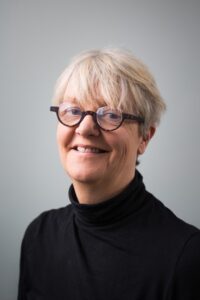
Orna Ross, Director of ALLi
Facts and figures about self-publishing are notoriously difficult to source. There are three main reasons for this.
- The self-publishing platforms largely treat their data as proprietary i.e. they don't share it because they don't want their competitors to know how they're doing.
- A significant number of self-published writers do not use ISBNs which means widely-shared data about self-published book sales is incomplete. Data collection agencies like Bowker and Nielsen base their findings on ISBN attribution and so miss out on all sales on Amazon and author websites that are made without an ISBN. (Bowker appears to have given up reporting on self-publishing in 2018).
- Existing reports on author income conducted by national writer organizations come from a traditional publishing perspective. As those of us who have tried to fill them out know, the questions asked by their surveys are often meaningless to any serious independent author, and can be impossible to answer, as they don't account for how we work and earn. And they fail to consider the creator economy, where authors are increasingly selling directly to readers from their own websites.
Not only is the data broken, people make comparisons between the income of all of self-publishing with less than the top 1% of traditional publishing, and draw bogus conclusions.
This paucity of relevant data, together with skewed interpretations and flawed methodologies, does real harm to writers' wellbeing, creative motivation, and understanding of their opportunities.
Author Earnings.com
For a short period of time, some years ago, indie authors had real insight into the self-publishing sector when indie author Hugh Howey and “Data Guy” Paul Abbassi created AuthorEarnings.com. Abbassi had created a software program that crawled online bestseller lists to scrape data that was public, online for all to see. He gathered, aggregated, and organized it and, together with Howey, interpreted it in a series of Author Earnings reports.
Indie authors were thrilled. Such was the interest that at the beginning, the site repeatedly crashed, due to high traffic. “Writers are wordsmiths, but I’ve never seen such a rabid group of number-crunchers in my life,” Hugh Howey said. “Indie authors take daily snapshots of sales and graph them to look for trends. They want to know as much as possible about what’s selling and to whom. As a group, to generalize, authors are mad for data.”
The Author Earnings reports shocked many. For example, an early report on three of the major genres in the US Amazon.com store found that:
- Indie authors dominated these bestselling genres and as a group were outselling the Big Five.
- 92% of the top 100 bestselling books were e-books.
- Most self-published authors were earning more money on fewer books than trade-published authors.
As a disbelieving publishing industry questioned their methods, ridiculed their findings and criticised their conclusions, AuthorEarnings.com went through the classic cycle of “first they ignore you, then they ridicule you, then they attack you, and then you win”. Over time, the industry not only came to believe it, their interest grew into an irresistible business opportunity for Paul Abbassi.
He and Howey abandoned the authors whose sales data they'd used to construct Abbassi's models, and whose wholesale support had brought him the attention of the wider publishing industry. Howey returned to his life as an author, sailing the world on his boat, and Abbassi formed a new company, BookStat.com, providing data only to businesses that turn over $10 million or more.
When asked if he would make his insights available to the Alliance of Independent Authors, who might afford the fee collectively and whose members together would comfortably exceed that figure, Abbassi gave an instant “No”. He couldn't trust authors to keep the information confidential and his business model depended on his data not being shared.
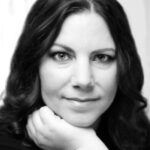
Melissa Addey, Campaigns Manager. “We have a shocking lack of data in the self-publishing industry and it’s frustrating.”
So now all we have is reports about author income falling, and other broken information.
“We have a shocking lack of data in the self-publishing industry and it’s frustrating because even when we all pull together, we don’t really get a quotable set of data,” says Melissa Addey, ALLi's Campaigns Manager. “Such data as we do have often mixes indie authors with traditionally published authors. And ‘self-published' in author income surveys covers everyone, from the writer who's made a single book for their family to indie authors and authorpreneurs–some of whom who are building six- and seven-figure publishing businesses from their writing and publishing.”
We see the real story in our member forums and other author social media groups, at SelfPubCon and other writing and self-publishing conferences like those run by 20Booksto50K and the Self-Publishing Show Live, in private masterminds and author-publishing groups.
Now we are calling on you to help us get real, shareable data that will support this true story. When we gather and share information, and better understand this rapidly changing market we're working in, we help each other make informed decisions.
Author Income Request
Below, we have collated some snapshot information from one Partner Member (Draft2Digital), some facts and figures from other studies, and some case studies from some of our Author and Authorpreneur Members. These provide interesting qualitative and quantitative snippets but we want to do better. We want to get some hard facts and figures.
We want to understand what's really happening in the publishing world rather than listen to what others tell us is happening or talk about what we suspect or hope might be happening.
We present an idea of one way to approach data collection (See 5/5000 below) but we're looking for other ideas from you, particularly if you're techy. Could you help us construct something like Abbassi's author earning methodology? Or something better? What else would work well?
Below are some thoughts, ideas, and yes, data, to inspire you.
Examples of Indie Author Influence and Impact
Reach
Indie authors today can self-publish in almost two hundred countries around the globe, in formats including hardback, paperback, eBooks and audiobooks. Thanks to Print on Demand (POD) technology, physical books can be printed and distributed one at a time, allowing books to be kept permanently ‘in print’ with little storage space required. And because authors retain their rights while self-publishing widely, many are also selectively licensing their translation, film and TV and other subsidiary rights to a variety of rights buyers.
Books by indie authors account for 30-34% of all e-book sales in the largest English-language markets, as reported in Publishers Weekly. In 2020 8% of Alliance of Independent Authors members had sold more than 50,000 books in the past two years.
Indie authors have comfortably exceeded six-figure turnovers, including to mention just a few from different genres: Joseph Alexander, Joanna Penn, Hugh Howey, Elana Johnson, Ines Johnson, DC Kalbach, Helen Scheuerer, and Octavia Randolph. Author LJ Ross has sold 10 million books and rising. Mark Dawson has a seven-figure turnover from his books and has sold film and TV rights. In 2019, Amazon’s review of Kindle sales said that ‘thousands’ of indie authors had earned more than $50,000 and that ‘more than a thousand’ had already passed $100,000 in royalties.
Because indie authors make up to 70% commissions from sales (minus the cost of publication) rather than traditional 5-15% royalties (minus the 15% which goes to their agent), for those authors prepared to merge artistic and business skills there is far greater scope for making a real income from their writing than has previously been the case.
And self-publishers are gaining traction as the creator economy expands, with more readers willing to buy books directly from author websites, subscribe to author memberships, and offer patronage in return for direct engagement and exclusives.
Recognition
Indie authors have made the USA Today bestseller list, won literary awards, achieved MAs and PhDs in Creative Writing, as well as taking up paid positions as Writers in Residence in prestigious organisations such as the British Library. The Martian, a sci-fi thriller first self-published by Andy Weir, was turned into a movie directed by Ridley Scott and starring Matt Damon, which grossed over $630m. Amazon created the Kindle Storyteller Award, whose £20,000 prize fund is larger than the Pulitzer and similar to the Costa. The Bookseller Magazine, the UK publishing trade magazine, has repeatedly named Orna Ross, founder and Director of the Alliance of Independent Authors, as one of the 100 most influential people in publishing, acknowledging the growing importance of self-publishing within the industry.
Representation
The rise of, and accessibility to, self-publishing, has allowed many people who might not otherwise have been published to self-publish their work, opening up to a far greater diversity of voices. A study by FicShelf found that women wrote just 39% of traditionally published titles, but 67% of self-published titles. Multiple indie authors from under-represented groups or even genres have referred to self-publishing having been a positive path for them, including Latinx author Maria E Cantu Alegre and Indian-Canadian Rupi Kaur, who sold 8 million copies of her first two poetry books. Fatal Shadows by Josh Lanyon became the first LGBTQ mobile game created by Moments: Choose Your Story.
Indie Author Income 2022: Quantitative Research
Gathered May 2022, by ALLi Partners Draft2Digital
While 2019 saw fewer titles published year on year compared to 2018, 2020 and 2021 saw double digit percentage growth across the board in the number of titles published and distributed through the Draft2Digital and Smashwords platforms.
Below are some insights are from Draft2Digital's aggregate sales from all the platforms they distribute to, for 2021 and the first quarter of 2022:
- Amazon, Apple, Kobo, Nook, Tolino, Vivlio for retail.
- Scribd and Kobo Plus for subscription services.
- OverDrive, Bibliotheca, Baker & Taylor, Hoopla, BorrowBox for libraries.
While Draft2Digital and Smashwards have recently merged, the data below does not yet include sales from Smashwords distributed data to retailers and libraries, nor the Smashwords store. “Our hope is that in 6+ months we'll be able to merge more comprehensive data between the two systems to get an even larger/clearer picture,” says Kevin Tumlinson at D2D.
2020 and 2021 were unusual years for publishing as for the rest of the world responding to the COVID-19 pandemic. “That drove more people into isolation, and more people to reading to pass the time,” says Mark Coker, Chief Strategy Officer at Draft2Digital. “In the spring of 2022, people seem to be breaking out to get outside, and catch up on vacations that are up to three years overdue. So the drive to get out and get away appears to be leading to more non-reading time.
“Overall, I think the pandemic will have a positive long impact on reading because it helped reintroduce millions to the unique joys of reading. But as people rush to reconnect with fellow humans after almost three years of worsening personal and political separation, the pendulum will probably shift to less reading for the year ahead, but still solid numbers compared to a few years ago.”
Q1 2022
At a high level here's what is sticking out so far.
- Global sales are growing. This is not an indicator that sales are slowing/reducing in the US (as USD sales continue to increase), but the % of US sales compared to other world territories is becoming smaller as those other territory sales continue to grow.
- US sales were 58.96% in 2019. In Q1 2022 they were 57.74%
- Beyond the top 10 selling territories, ROW (Rest of World) sales in 2019 were 7.48% of all sales. In Q1 of 2022 they were 8.43% (see images below)
- Books in series accounted for a little more than 75% of all unit sales.
- Library sales accounted for 10% of all sales.
- Subscription markets represent 6% of all sales.


Indie Author Income 2022: Qualitative Research
Gathered May 2022, from ALLi Author and Authorpreneur Members
In order to delve deeper into the facts and figures about self-publishing, we asked a number of ALLi author and authorpreneur members to tell us about their business performance over the past year, offering them full anonymity if we could publish their answers.
We asked 3 questions:
-
Overall, was 2021/22 up or down for you, profit-wise?
-
Did you develop new income streams e.g. selling direct, paid content (e.g. talks, webinars), reader membership? We’re interested in anything that’s new for you and adding to your bottom line in the creator economy.
-
We’d also love to know whether your writing-related income moved up to a new personal level e.g. matched a previous job, allowed you to quit the day job, moved into six/seven/eight figures–or any important milestone for you.
Trends from the Data
- Definite sales spike from lockdown, sometimes followed by a light but not unexpected fall again as people returned to their ordinary lives, but overall impression from the authors who already had strong businesses is that they did much better than the reported 5% in the publishing industry report.
- Trend towards direct sales from websites or Kickstarter/Patreon etc.
- Trend for established authors to start looking into foreign markets, especially Germany.
- Audiobooks still mentioned as growing overall.
- Several mentions at all levels, of various ‘pivots’ made: trying ‘wide’, trying new formats or genres, developing online courses, signing with publishers when usually self-publish, etc. Showing a creative and entrepreneurial approach.
- Mentions of personal milestones relating to new-found freedoms, income levels, or insights into vulnerabilities. Milestones for authors are not only financial.
Other Interesting Insights
- Illness/incapacity in one form or another can strike at any time and making plans for this is really important. This includes estate planning, which is just a more permanent planning process. Author 1 not only exemplifies this but wrote a very useful practical blog post about it.
- (Subset of above) A few highly disruptive issues with platforms suddenly being taken away either permanently or temporarily (e.g. Instagram, Amazon accounts), through hackers or platform checks and decisions.
- A number of authors reported neurodiversity/anxiety/introversion. While the control offered by self-publishing worked better for them in the first place, marketing and other such tasks are more difficult for them.
Author 1 (Fantasy and Science Fiction)
Affected by illness (this has anecdotally been an issue for multiple writers, with many suffering creative blocks and other pressures and responsibilities e.g. educating children while schools were closed).
“I can’t comment on sales, etc., because I spent the last two years discovering and then recovering from (completely, thanks) a medical crisis. As an incapacitated one-man-business, I received a rather cogent experience of what it means when you don’t have employees to evaluate advertising and marketing, to bring the books up to date, to get your taxes in order, and so forth. My actual writing, happily, wasn’t an issue (other than the inherent delay) because I had not yet advertised for and released the first books of a new series, but a few months later and that would have been involved as a wasted opportunity, too. Things are back to normal now while I play catch-up, but maybe a reminder of the fragilities of many of our businesses might also be in order as a caution, in addition to our experience of the marketplace for your comparisons.”
Author 2 (Historical Fiction/Children’s)
- 2021 was an excellent year for me, as much as 20% above previous years on a month-by-month basis in terms of UNITS SOLD. 2022 is getting back to more “normal” units sold figures. But for me this is good. I have not released any new books for over a year, so maintaining steady sales on all-backlist books is excellent news. But the truly astounding thing is that in 2022, while unit sales are down from 2021, income is way, way up. I have relied solely on Amazon ads for my promotions–zero social media, zero newsletters. But my spend on Amazon ads has plummeted since January 2022. Somehow the ads just aren't performing, so that my ad spend is now around 15% of what it has been for the past several years. Yet the number of books sold so far in 2022 matches that of 2019 and 2020. Which means my children's books (which is what all this applies to) have taken on an organic life of their own without much advertising, and my actual profit has risen 5-fold. This is an author's dream come true. Though of course it remains to be seen how long this can last. I'm looking at revising my Amazon ads for the first time in two years.
- I had plans–don't we all? But too much real life got in the way.
- In 2021, I graduated into six figure income (in US dollars). This is astounding!
Author 3 (Historical Fiction)
- 2021 was a better year than 2020, with 26,837 total books sold for a gross income of £69, 250. I had experimented with going wide the year before but, in September 2021 I removed all wide books and went back into KDP Select, which increased the income over the last 3 months. So far 2022 has seen an increase in sales and income. The first 4 months have seen gross income of £31,280, with an estimated annual income of £93,840, but I believe it will be higher as I have another new title releasing in June.
Total sales for the first 4 months are 15,546 with an estimate for the year of 46,638. - Most growth was seen in eBook, but over the last 6 months or more paperback is also selling better than before, as well as Hardback titles.
Audio for me saw a significant drop in sales and income, perhaps because due to Audiblegate I came out of being exclusive and went wide, and struggled to gain traction with wide titles while losing impetus within Audible itself. So much so I may not invest in audio for the new series which is a continuation of my previous one.
I have done nothing different this year other than to increase effort using Amazon Advertising, and have stopped using Facebook advertising altogether. I don’t sell books from my website, and rarely sell at any of the events I take part at. - If goals are achieved this will be double my last income when I worked.
Author 4 (Romance)
- 2021 saw a 40% increase in writing related income compared to 2020. 2022 is looking to be on par with 2021 so far.
- The biggest cause for the growth was investing in foreign translations, especially Germany. In fact, I made more money in Germany in 2021 than I did in the US.
- I did reach a personal milestone in 2021: I cracked the half million in earnings (ended around $557,000), which was a stretch goal.
Author 5 (LGBT Dark Fantasy)
- 2020 saw a 50% increase on 2019’s profits. 2021 saw a negligible change on 2020. My last tax year, April 2021 to March 2022 saw profits holding steady, on top of a larger increase during the Covid year, 2019 to 2021. These are net profits, not gross. Sales are holding steady this year. I doubt I'll see much of an increase, but I’m not expecting to see much of a decrease either.
- Paperback sales are increasing slightly, but this may just be due to having more titles in my backlist. I do post videos on TikTok, with rare success. TikTok does increase paperback sales, but much of it is luck, and it’s not really a sustainable business model to use TT as reliable advertising. In 2021, I increased my ebook prices to $4.99 and $5.99. Average ebook prices in the industry (indies) has been $3.99 for a long time. I don’t see that low price $3.99 as being sustainable with the cost of editing and cover design all increasing. Paperback prices also increased but that was due to Ingram’s price increase. I’m not a fan of increasing paperback prices, we already pay A LOT for printing.
- I net profit just over six figures a year. My outlook is optimistic, despite inflation squeezing everyone. I’m not yet seeing any noticeable downturn in earnings from inflation worries.
Other notes/insights
Interesting that reports notes digital sales were down, overall. That’s not what I, personally, saw. But then, indies sell digital ebooks at a lower cost than trad, who deliberately drive sales to print versions (by keeping ebook costs high) to prop up their business model of bookstores and trade paperbacks. We must remember with these reports, that publishers sell to bookstores, not readers. Indies sell to readers.
I write in a fairly niche genre and competition between authors in that genre is not as fierce as some others, that require heavy advertising. I don’t do much advertising at all. My costs go into editing and cover design (fantasy is design heavy). I rarely discount. I don’t use BookBub etc. I sometimes use AMS, but only for a few days on a new release. I am in KU. But I also use Ingram for paperback sales, not Amazon KDP.
Author 6 (Fantasy)
- Over the last twelve months I've seen tremendous growth from ~10k/month to over 60/k a month now. So, the last year has been very good to me.
- I do have a reader membership (Patreon). The biggest trend I've noticed is a large shift in audiobooks. There appears to be an increasing priority on value. Because for them it is all one token, they want the most entertainment they can get for the single token. Boxed sets/Omnibus are on the rise and doing very well. My audiobook income has been fairly stagnant, it is my ebook that has made great strides, particularly since the beginning of 2022.
- I just finished my first 12 months as a full-time author.
Author 7 (Paranormal Romance/Urban Fantasy)
- 2020 was not great for me. 2021 was amazing (More in line with 2019) and 2022 seems to be falling somewhere in between. I have attached screengrabs of 2020, 2021, 2022. I think amazon glitches and less preorders this year have made it a bit tougher than usual. I think also certain tropes like werewolves are overdone and so readers are getting fatigued from that.
- I am launching a Kickstarter in an effort to add a new revenue income stream. They will be exclusive hardbacks of my most popular series. Screen grabs below.



Author 8 (Cozy Mystery)
- The same as usual for me. I've been on 6 figures/year since 2013 (went full time late 2010) but
- I started selling non-fiction direct to the public from my website in 2003 due to the trad house dropping my title at the last minute. I sold paperbacks direct to the public and bookstores for years. (I used to do digital runs.) In recent years, I sold fiction ebooks through Payhip, but last year went all in selling direct with ebooks, audio, and paperbacks (paperbacks through Lulu Direct to avoid having to manage/ship stock myself). I have a Shopify store now as my main website and push 90% of my marketing efforts to selling direct. I will be releasing a course on selling direct mid-year which will be my first new income stream since I started writing for a living over decade ago. I'm passionate about selling direct and do believe it's the wave of the future.
- Am aiming for 7 figures!
Author 9 (Historical fantasy)
- In 2021 my income was the highest it has been since I started indie publishing (an easy 6-figures in 2021), and it was up significantly over 2020 – due mostly to the popularity of one particular series. So far, I anticipate 2022 declining over 2021 due to starting a new series that doesn't yet have the popularity of the one that ended in 2021.
- Audio grew significantly and now accounts for 20% of my income. I sell audio direct and wide and the percentage coming from ACX/Audible is dwindling. I am also growing my webstore and selling both ebooks and audio direct (with BookFunnel for delivery). While this is only a small % of overall income at this point in time, I am actively growing direct sales. I am planning to grow my 6-figures to mid 6-figures over the next 5 years, through expanding my reach, building my back catalogue and increasing formats (ebook, audio, paperback, large print etc).
- Income in 2021 was my highest year yet with a 6-figure net profit.
Author 10 (Thrillers)
- Way up, for both years, by about 200%. Went from $80K in 2020, to $150K in 2021, and now on track to hit $300K in 2022.
- I published three books in 2021 and one so far in 2022 (with two others due out in summer and winter). More advertising on Amazon and, particularly, Facebook, where the majority of my sales comes from.
Author 11 (Paranormal romance)
- 2021 has shown fantastic growth in comparison to the previous year, with 2022 continuing to be even stronger, with signs that it was going to end up with greater sales than 2021.
- To date, the only new income streams I have created are via online retailers, apps, translations and audio. I have started looking into selling directly from my website, and I have a designer helping me with setting this up on my website, along with selling paperbacks directly as well. I am also going to start a Patreon page very soon and start building that subscription following. And I'm even investigating Kickstarter as a potential option as well. Online content, I haven't created any as of yet which is all due to time constraints to be honest. Though I am constantly on the lookout for new avenues / markets to offer my books such as looking to enter the Italian market and build my wide following so I don't have all my eggs in the Amazon basket.
- I used to work full time as a social media manager and in marketing. In 2020, the company offered me the chance to work more days (as I was only doing 4 days a week and working from home) or take redundancy. So I took the payout as it would set me up for 6 months. My mission was to grow my sales to the point where I would make more than I was working full time. And in 2021 I doubled my salary from my previous job. This year, I will be doing above that still, so leaving the job was the best decision I made. I am a full-time author now and loving what I do. My goal is to try to hit 7 figures per year in the coming years if I keep growing this way, and I have my sights set to achieve the goal.
Author 12 (Thrillers and speculative fiction)
- 2021 was a phenomenal year for me. In 2020 I went from selling 300 units (including KU borrows) in January to 8,400 in December due to switching from genre-vague thrillers to UK police procedurals. I went full time in January 2021 which proved to be an even better year. In January 2021 I sold almost 10k units and made £14k. In December I sold 62k units and made £92k. My best month was November, when I got a boost due to winning a very significant indie award in October and sold 84k units. The main reason for the big jump in 2021 was releasing my (new) series. So far in 2022 they're up on the end of 2021. In April 2022 I sold 87k units and made £127k, largely helped by a very successful launch.
- I rapid-released the first three books over a period of a month in the summer and saw sales triple from what they had been earlier in the year. Releasing a series set in an English holiday destination in a year when people couldn't travel abroad wasn't something I planned but it really hit a chord. And then of course the award helped a lot. I didn't develop new income streams but I have been looking at investing my earnings so I have a buffer should sales fall in the future. I'm working on some new series (including collaboration) which I hope will keep things growing.
- Personally, this has been life changing for me. I was previously a freelance technical writer with a precarious income and now I feel much more stable. It's also been a fantastic experience, receiving so much positive feedback from readers and seeing how much they enjoy my books. And it's given me the financial independence to get divorced, buy my own home and start a new life after coming out as gay in the summer of 2021. I think you can say I've had a rollercoaster of a year! This is more important to me than the money, but would have been much more difficult without financial independence.
Other insights
I realise my story is far from typical but it shows that you can go from selling a few copies a day to big success with hard, strategic work and a lot of learning.
Two more valuable insights
We asked Written Word Media if they had any new data they could share and they told us: In our May newsletter we asked authors “Compared to 2021, do you think you will earn more or less from your books in 2022?” And 57% of respondents said they think they will earn more. And about 22% said less, and 21% said about the same. Given that there was a spike in sales from lockdowns, the fact that almost 80% of authors think they will earn the same or more in 2022 is encouraging.
And after a huge piece of data analysis covering tens of thousands of books, K-Lytics have provided new data showing some interesting insights, in particular that indie authors not only rank equally to traditionally published authors for quality of reviews, but also take home 39% of Kindle royalties in 30 top-100 Bestseller lists (Big 5 Publishers take 32%, Amazon imprints 15% and other traditional publishers take 8%: and of course traditionally published authors are then receiving a 5-10% of those royalties instead of the 60-70% indie authors are getting). We hope to hear more from K-Lytics soon, as insights like these are very valuable to the indie community.
Data Collection: An Idea: 5/5000
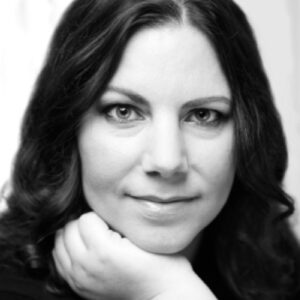
Melissa Addey, Campaigns Manager
Right now we're exploring possibilities for data collection and we'd like your input. What's clear is that we need solid numbers from a large body of authors.
- How much income did you make in the last financial year from everything related to your writing?
- What % up or down is that on your previous year?
- What business model do you employ?
- Are you full-time or part-time?
- How many titles do you have so far?

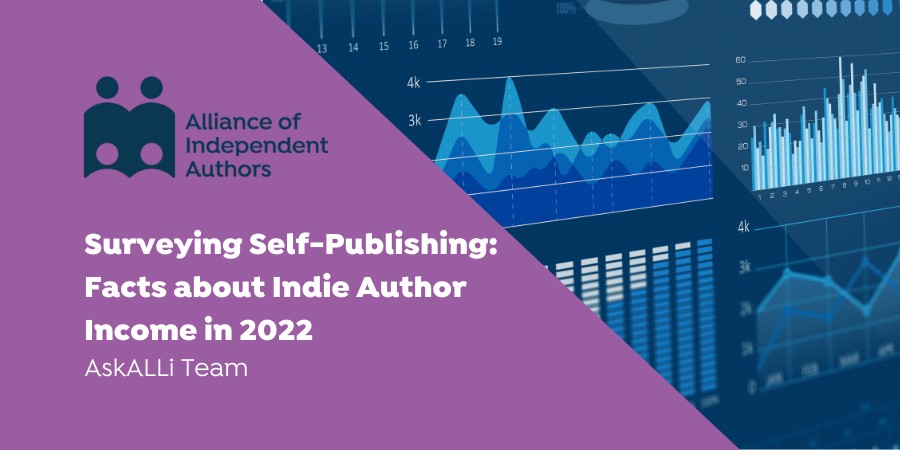
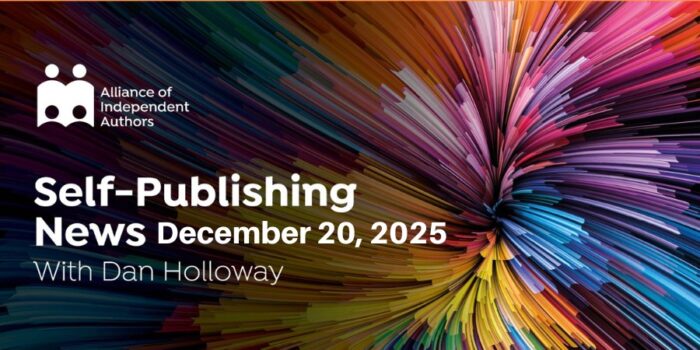
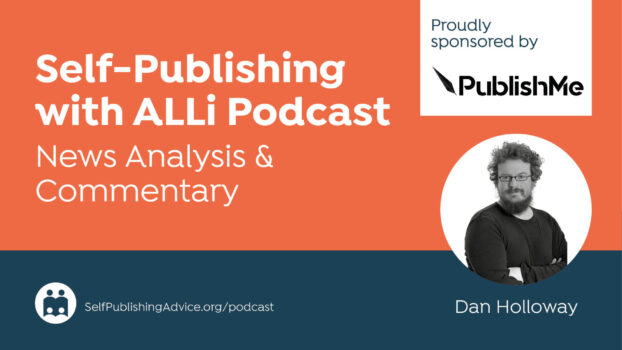

A really interesting read. Thank you.
The questions I would love to ask are:
How long have they been self-publishing?
At what point/s did their sales spike or was it a fairly even build-up?
How much do they spend on advertising/marketing/giving away books etc
I’m all for this.
Additional data points to collect:
* Base country (US, UK, etc.)
* Income by Base country vs others (and define it as “Net income”)
* Title Count:
—— Stand-alone
—— Series
—— Shorts
………..(Income by category by title category & count if possible: to answer the magnitude of earnings for series vs singletons)
* Genre: don’t just ask — provide a specific list if you want to do data comparisons, complete with defined aggregation. Use the “Other” categories as write-ins so that you can broaden the defined categories for next time. E.g.:
—SFF
——-Fantasy
———-Epic Fantasy
———-Urban Fantasy
———-(etc.)
———-Other
——-ScienceFiction
* Advertising spend (and be prepared to find that people may have spent more on advertising than income)
* Business Structure/Completeness or Growth Pivots: a multi-select list like: * Virtual (or real) assistants. Accounting. Succession planning. Emergency planning. [all to get a handle on moving from ad hoc one-man businesses to real small professional setups.]
* Royalty streams (specific media/industry list with defined aggregation. Use the “Other” categories as write-ins so that you can broaden the defined categories for next time. E.g.:
—Book
——Print: Paperback
——Print: Hard Cover
——Print: Specialized (e.g.,, Braille, large print)
——Ebook
——other
—Audio
—Film
—Game
—Other
I followed the AuthorEarnings data analyses with great interest. I’d be happy to brainstorm/work with you on completeness and comparability of data collection issues (I used to do things like this professionally).
You want to satisfy at least two goals:
A) Data in categories that are comparable to other (non-Indie) industry reports
B) Data in categories that are useful to Indie authors as they evaluate and modify their business plans.
These are not identical…
You might also want to consider identifying and separating the Indie category that is largely ignored — the one-off or labors-of-love (more or less) authors who could use basic data but don’t have an equivalent match on the Trad Publishing side (less of a profit motive).
Karen would you drop me a line at [email protected]? Would love to have your insights as we develop this idea, I’ll take all the help I can get 🙂
I am glad to hear others make money. I don’t.
I have 5 indie books for sale on Amazon. I am lucky if I sell 1 book a week on Amazon.
I write predominantly memoirs.
I don’t think I will ever recover the costs of producing my books. including marketing costs.
As an indie author, my sales have not been great. My books are fiction/mystery. I have had a problem with Amazon getting my series printed correctly, and I am not sure if I have my books categorized correctly. They are also on Barnes and noble, d2digital, Ingram spark, smashwords, and one library in Denver. I am on instagram, Facebook weekly, and Twitter sometime. Not sure what to do to get sales. If anyone has any recommendations email me